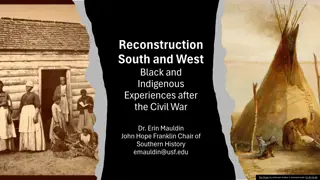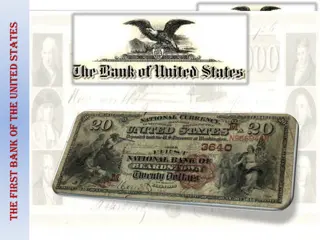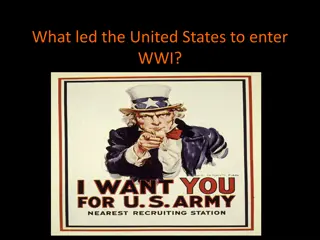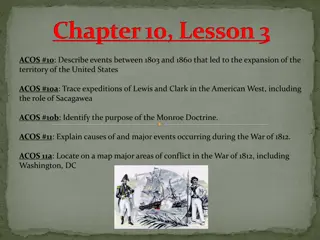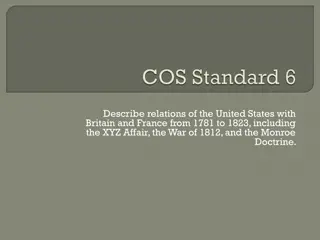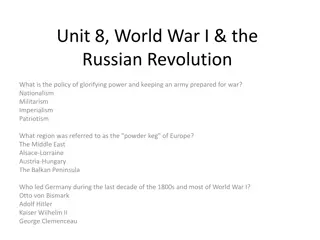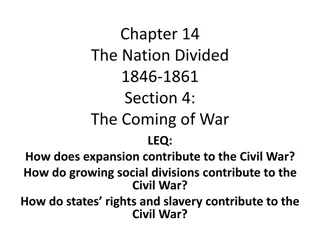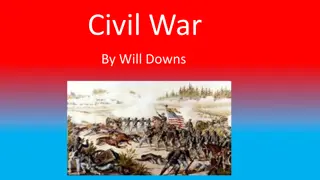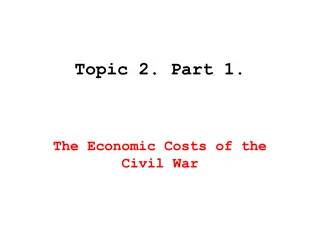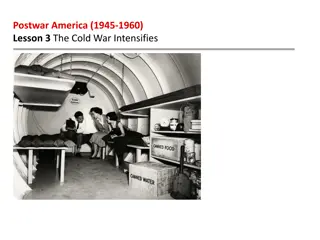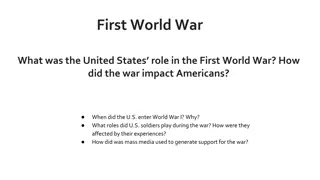Events Leading to the Civil War in the United States
Abolitionism movement in the North, key events such as the Compromise of 1850 and Kansas-Nebraska Act, significant figures like John Brown and Frederick Douglass, and the rise of tensions that eventually led to the Civil War are detailed in this historical narrative.
Download Presentation

Please find below an Image/Link to download the presentation.
The content on the website is provided AS IS for your information and personal use only. It may not be sold, licensed, or shared on other websites without obtaining consent from the author.If you encounter any issues during the download, it is possible that the publisher has removed the file from their server.
You are allowed to download the files provided on this website for personal or commercial use, subject to the condition that they are used lawfully. All files are the property of their respective owners.
The content on the website is provided AS IS for your information and personal use only. It may not be sold, licensed, or shared on other websites without obtaining consent from the author.
E N D
Presentation Transcript
John Brown
Abolitionism Spread in North Frederick Douglass: runaway slave who became abolitionist leader William Lloyd Garrison: editor of abolitionist newspaper, The Liberator Underground Railroad: elaborate network of white abolitionists, free blacks and slaves (not only Harriet Tubman) Total number of fugitives assisted by the UGR 1830-1860 was between 70,000 and 100,000 2
Events leading to Civil War Northwest Ordinance Kentucky and Virginia Resolutions Missouri Compromise Tariff of 1828 Nat Turner's slave rebellion Nullification Crisis The Amistad Texas annexation Mexican American War Wilmot Proviso Ostend Manifesto Underground Railroad Compromise of 1850 Fugitive Slave Act of 1850 Uncle Tom's Cabin Kansas Nebraska Act Bleeding Kansas Sumner Brooks affair Dred Scott v. Sandford The Impending Crisis of the South Brown's raid on Harpers Ferry 1860 presidential election Secession of Southern States
Underground Railroad Compromise of 1850 Fugitive Slave Act of 1850 Uncle Tom's Cabin Kansas Nebraska Act Bleeding Kansas Sumner Brooks affair Dred Scott v. Sandford The Impending Crisis of the South Brown's raid on Harpers Ferry 1860 presidential election Secession of Southern States Battle of Fort Sumter Northwest Ordinance Kentucky and Virginia Resolutions Missouri Compromise Tariff of 1828 Nat Turner's slave rebellion Nullification Crisis The Amistad Texas annexation Mexican American War Wilmot Proviso Ostend Manifesto
Compromise of 1850 California wanted to be a free state The South had assumed it wouldn t be and was upset it was As a compromise, California would enter the Union as a free state with the condition that Utah and New Mexico would vote on slavery Fugitive Slave Law meant to appease South, many Northerners felt it turned them into slave-catchers 5
Kansas-Nebraska Act of 1854 Proposed by Stephen Douglas People in Nebraska Territory would vote on whether to have slavery or not (popular sovereignty). Sounded like a sound compromise, but it upset some anti-slavery forces Freesoilers(poor farmers who couldn t compete with slave-owners), and pro-slavery forces streamed in Mini civil war: Bleeding Kansas 6
Even people in Congress and other government positions were split on the issue of slavery Charles Sumner, a Kansas Senator, was caned over the issue Named called several men over KS- NE act Beat violently Couldn t work for 3 years
Most abolitionists helped slaves by hiding them in safe houses located on the underground railroad However, some abolitionists used violence to help slaves
Slavery or Not? People in Kansas were very split on the decision of slavery Jayhawkers and Border Ruffians/Bushwhackers held very strong beliefs Willing to fight/die for their them
Bleeding Kansas Clip Use the Bleeding Kansas Clip from Discovery Education from the movie The West: Death Runs Riot
Bushwhackers believed terror would convince Kansans to vote to make Kansas allow slavery Wanted to scare the people Quantrill s raid on Lawrence was one of the worst battles over slavery in Kansas Burned the town down, only killed men, left many women without a husband and kids without fathers
John Brown Abolitionist Involved in the Underground Railroad Moved to Kansas to support the anti- slavery cause Responded to violence by pro-slavery men by organizing the murder of 5 proslavery settlers: Pottowatomie Creek Massacre 13
John Brown Missourians were not the only ones who killed over the issue John Brown was strongly against the practice of slavery Witnessed a slave be beaten when he was a child and never forgot it
Often rode into Missouri and attacked proslavery farms Would take their slaves Sometimes brought them to Canada or Northern States Once traveled 1000 miles to take 11 slaves
Pottawatomie Creek Massacre Took his view to a new level Angry over an attack by bushwhackers in Lawrence Led by John Brown His sons and a few others Shot and knifed 5 proslavery men
John Browns Raid on Harpers Ferry Brown planned a raid on a federal arsenal He wanted to distribute weapons to slaves Action failed. Brown and his men were mostly captured or killed within 36 hours Brown was ultimately hanged 17
Raid on Harpers Ferry Arsenal Rode to Harpers Ferry, Virginia to attack their arsenal Area were weapons were kept Wanted to take over the arsenal in order to supply slaves with weapons
His plan failed and he was convicted of treason Committing a crime against your country He was later hanged in Harpers Ferry, VA Very controversial (even today)
Abraham Lincoln called Brown a misguided fanatic. Abraham Lincoln John Brown
Martyr or Terrorist? Martyr: a person who is put to death or endures great suffering on behalf of any belief, principle, or cause Terrorist: A person who uses terror as a way to convince others of their views


![❤[PDF]⚡ Civil War Talks: Further Reminiscences of George S. Bernard and His Fel](/thumb/20551/pdf-civil-war-talks-further-reminiscences-of-george-s-bernard-and-his-fel.jpg)
